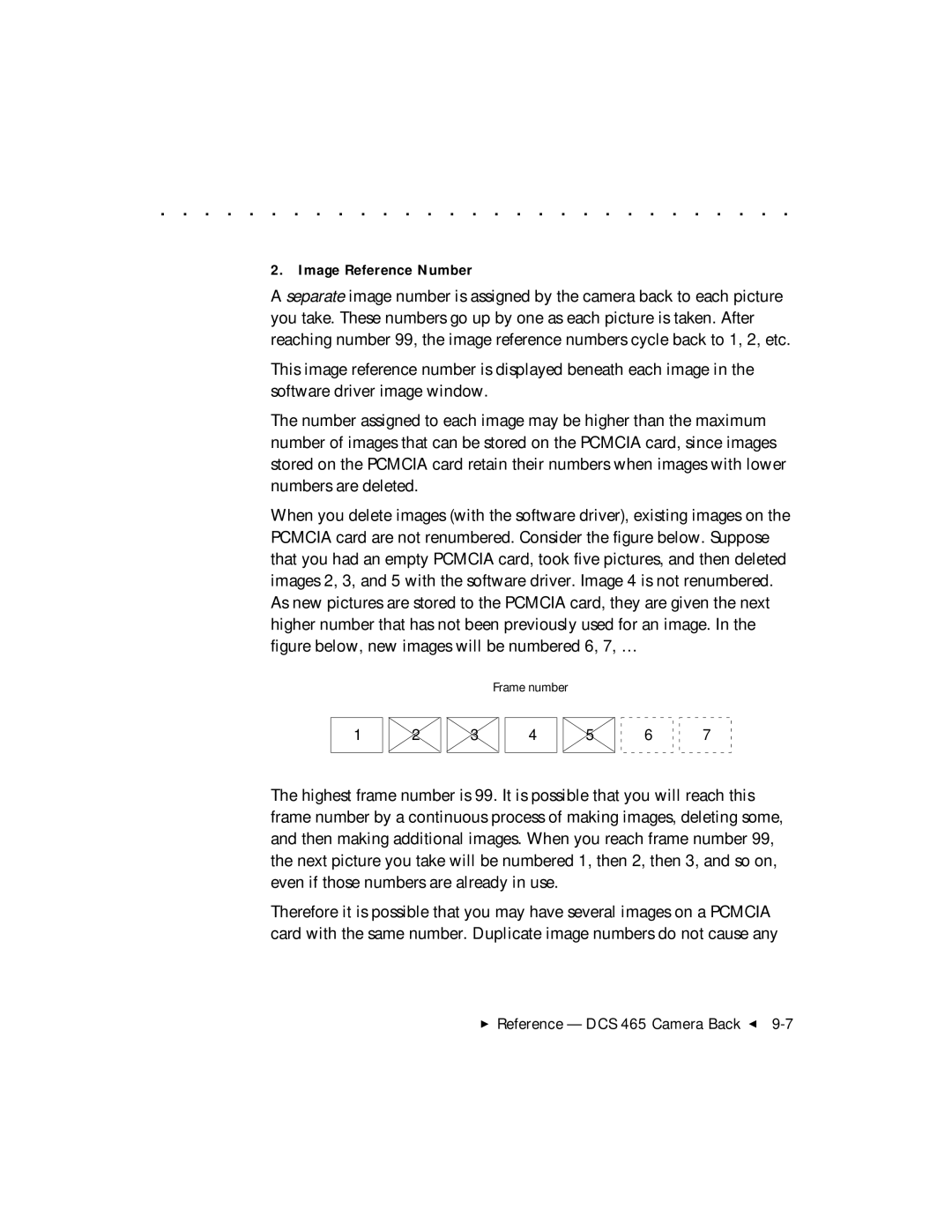. . . . . . . . . . . . . . . . . . . . . . . . . . . . .
2.Image Reference Number
A separate image number is assigned by the camera back to each picture you take. These numbers go up by one as each picture is taken. After reaching number 99, the image reference numbers cycle back to 1, 2, etc.
This image reference number is displayed beneath each image in the software driver image window.
The number assigned to each image may be higher than the maximum number of images that can be stored on the PCMCIA card, since images stored on the PCMCIA card retain their numbers when images with lower numbers are deleted.
When you delete images (with the software driver), existing images on the PCMCIA card are not renumbered. Consider the figure below. Suppose that you had an empty PCMCIA card, took five pictures, and then deleted images 2, 3, and 5 with the software driver. Image 4 is not renumbered. As new pictures are stored to the PCMCIA card, they are given the next higher number that has not been previously used for an image. In the figure below, new images will be numbered 6, 7, …
Frame number
1
2
3
4
5
6 7
The highest frame number is 99. It is possible that you will reach this frame number by a continuous process of making images, deleting some, and then making additional images. When you reach frame number 99, the next picture you take will be numbered 1, then 2, then 3, and so on, even if those numbers are already in use.
Therefore it is possible that you may have several images on a PCMCIA card with the same number. Duplicate image numbers do not cause any
